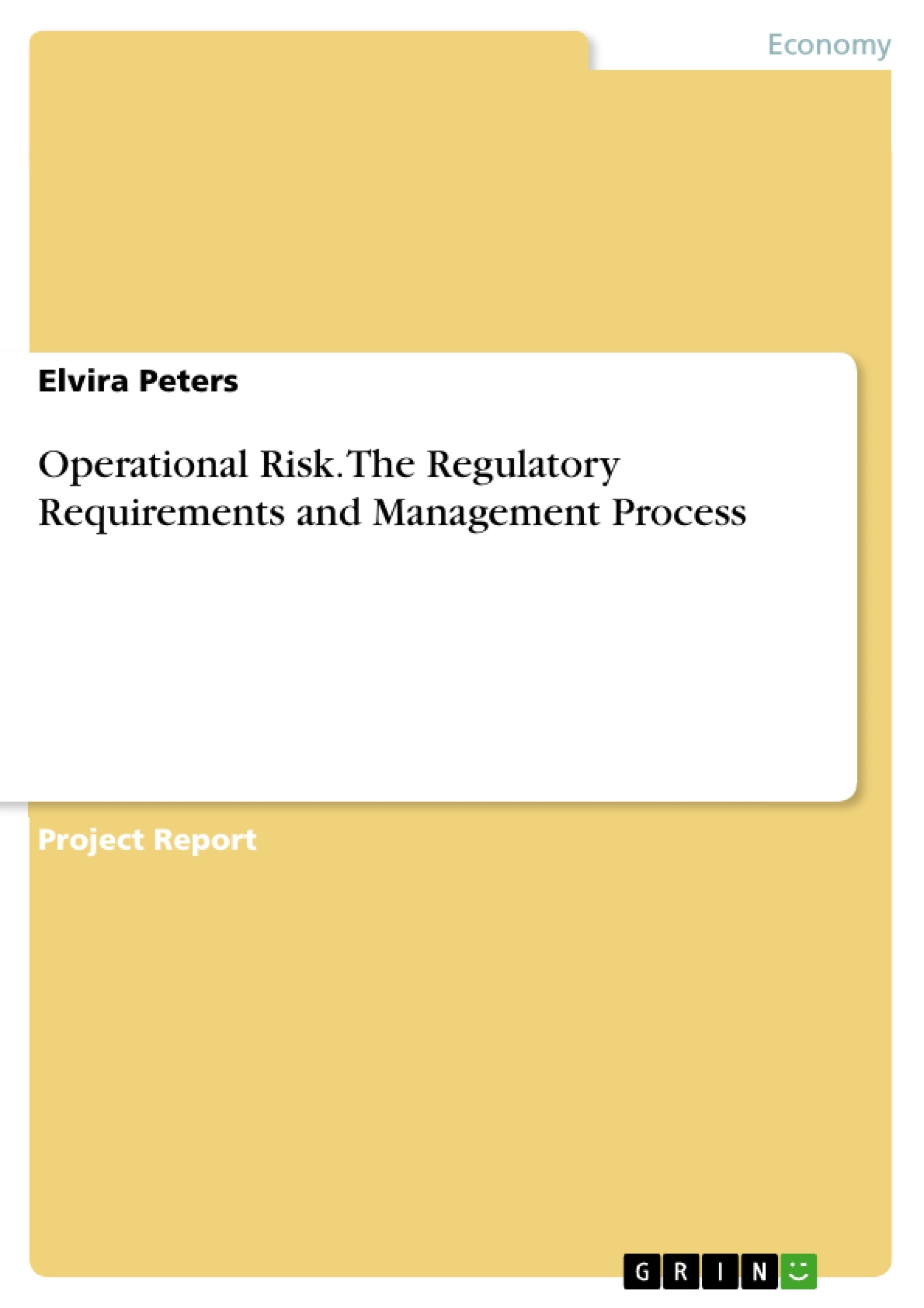During the last twenty years operational risk has gained in importance in the financial sector. Although this type of risk is definitely not new but rather one of the oldest, it has remained unconsidered for a relatively long time. However operational risks have always existed and do exist in the daily business ever since the foundation of every financial institution.
Considering the increased complexity and global developments in the financial system as well as the recent extremely large losses caused by operational risk, this risk type has finally acquired a greater relevance. One of the most popular examples for the tremendous losses caused by operational risk is the collapse of the Barings Bank in the year 1995 due to an inadequate control system and serious failures in management and supervisory.
Unlike other types of risks operational risks are very heterogeneous and diversified. The term includes a variety of meanings and range from employee errors, systems’ failures and frauds up to external events, such as fire or floods. Therefore the former definition of operational risk was a negative one, which stated what the term is not – e.g. credit, market or liquidity risk – it was the “other risks” basket (Utz 2006: 52). But this definition has proven to be “opaque and less than useful” (Carol 2003: 104) and is now obsolete.
Since a consistent definition is absolutely necessary for a general framework for managing and controlling operational risks, the Basel Committee provided a more precise definition. It defines the operational risk as: “the risk of direct or indirect loss resulting from inadequate or failed internal processes, people and systems or from external events” (BCBS 2001: 2). This definition includes also the legal risk, but not the reputation risk and strategic risk. A lot of industry representatives applied this definition, hence it can now be assumed as the standard one.
According to this definition, the operational risk can be divided into two main streams of risk: the external and the internal risk: The internal risk arises inside the institution, whereas the external risk arises outside the institution.
List of contents
1. Introduction and Definition
2. Important Regulatory Requirements of Operational Risk
2.1 The Basel Capital Accord
2.1.1 The First Pillar: Minimum Capital Requirements
2.1.2 The Second Pillar: Supervisory Review Process
2.1.3 The Third Pillar: Market Discipline
2.2 Sound Practices
2.3 The National Implementation of Basel II in Germany
3. The Operational Risk Management Process
3.1 Risk Identification
3.2 Risk Assessment
3.3 Reporting
3.4 Management of operational risks
3.4 Monitoring
4. Bibliography
- Quote paper
- Elvira Peters (Author), 2015, Operational Risk. The Regulatory Requirements and Management Process, Munich, GRIN Verlag, https://www.grin.com/document/324197
-

-

-

-
Upload your own papers! Earn money and win an iPhone X. -

-
Upload your own papers! Earn money and win an iPhone X. -

-
Upload your own papers! Earn money and win an iPhone X. -

-
Upload your own papers! Earn money and win an iPhone X. -

-
Upload your own papers! Earn money and win an iPhone X. -

-
Upload your own papers! Earn money and win an iPhone X. -

-
Upload your own papers! Earn money and win an iPhone X.

